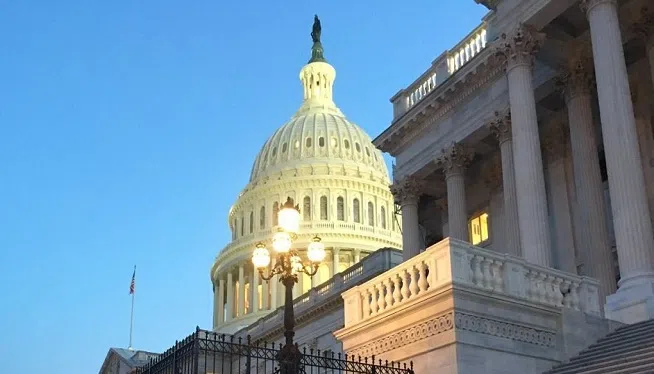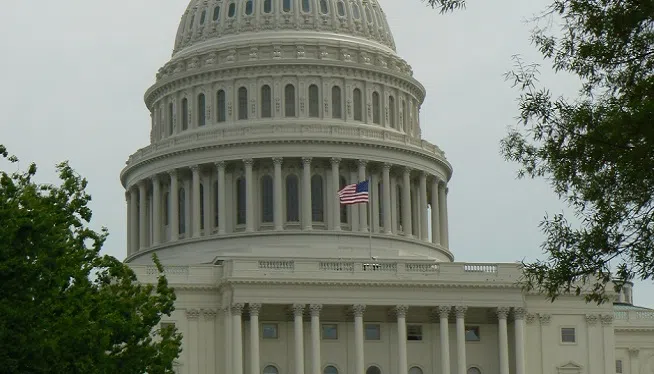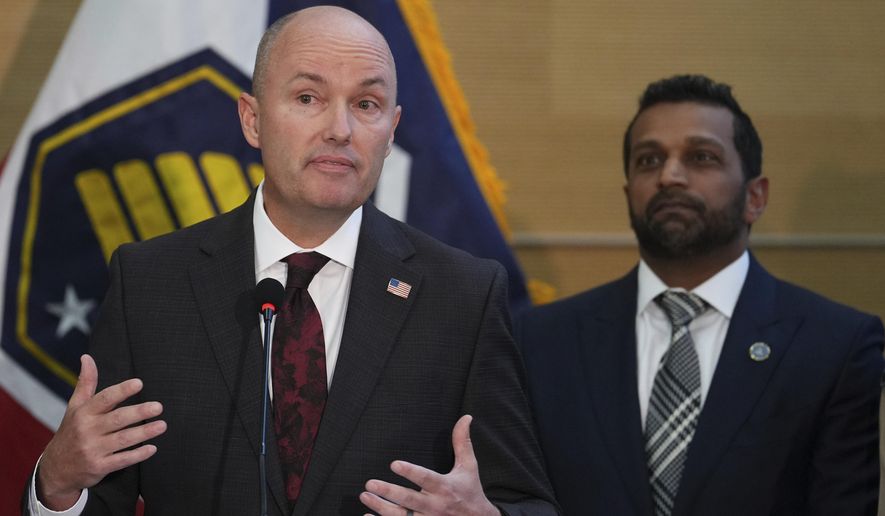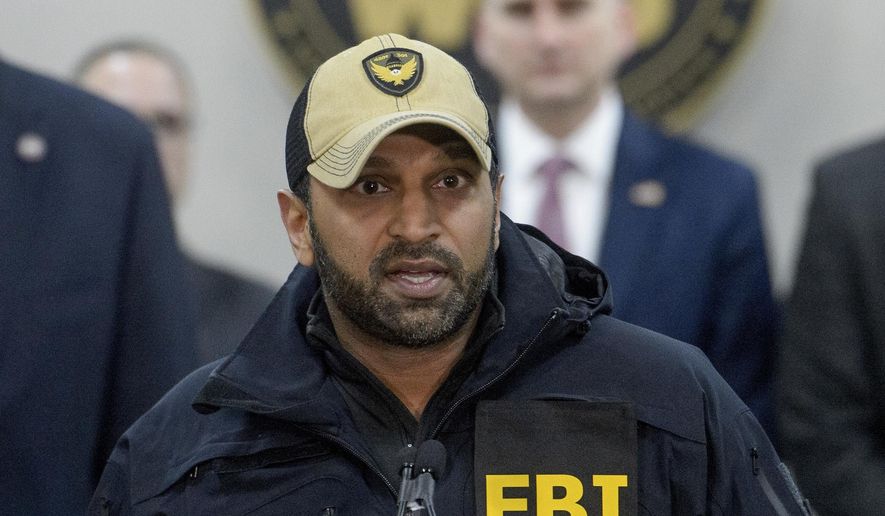(CNN) — It’s been an eventful past few months for members of Congress.
A new administration, investigations into Russian election meddling and a dramatic health care showdown are only a few of the headlines that came out of this jam-packed legislative session.
But following a voice vote Thursday night, senators are packing their bags and getting out of town — and they won’t be back until after Labor Day. The House has been out since July 28. Why? Say hello to August recess.
The beginnings of the August recess can be traced back to the early days of the Senate’s meetings in the capital — in particular before a little thing called “air conditioning” was invented.
The District of Columbia (or Philadelphia or New York City, depending on the year) just got too hot for senators and their staffers to work, so the Senate would convene in December and adjourn in the spring, according to the Senate’s website.
“Manufactured weather,” or air conditioning, was introduced to the chamber in the 1920s, but it still proved insufficient — and the six-month model still made sense because being a member of Congress was only supposed to be a part-time job.
By the 1950s, though, the schedule of a senator had changed. By then, they were working year-round with very few breaks built into the calendar.
In 1959, Sen. Margaret Chase Smith described “confused thinking, harmful emotions, destructive tempers, unsound and unwise legislation and ill health” that resulted from not taking a break from legislating.
The Legislative Reorganization Act, introduced in 1970, put an end to the yearlong sessions, mandating a summer break be a part of the schedule. But not even that came without a fight: Older senators wanted a traditional model — come to Washington in January, do business and return home by summer — while younger senators wanted a designated six-week summer recess.
Now, even with modern-day technology and air conditioning, senators use recess as not only a break from muggy Washington but as a chance to head back to their home states and connect with their constituency (and maybe even take a break).
Yes, but at one point just a few weeks ago, not everyone wanted to. Before the historic health care vote-o-rama killed the Senate health care bill, some senators didn’t want August recess to even happen.
A group of 10 Republican senators — Georgia’s David Perdue, Montana’s Steve Daines, Iowa’s Joni Ernst, Louisiana’s John Kennedy, Oklahoma’s James Lankford, Utah’s Mike Lee, South Dakota’s Mike Rounds, Alabama’s Luther Strange, Alaska’s Dan Sullivan and North Carolina’s Thom Tillis — wrote Majority Leader Mitch McConnell asking him to cancel August recess.
Instead, they wrote, there were five priorities the Senate need to focus on: fixing health care, funding the government, dealing with the debt ceiling, passing a budget resolution and improving the tax code.
McConnell didn’t cancel the recess, but he did delay it until the third week of August, primarily so that members could work on the health care bill. With the bill dead, so is that plan.
Though they’ll be gone, senators are using procedural processes in their arsenal to try to keep President Donald Trump from being able to make recess appointments.
Though federal officials appointed by the President usually require Senate confirmation, a recess appointment grants the President the ability to act alone in appointing a federal official while the Senate is in recess. That appointee wouldn’t need to be approved until the end of the next session of Congress.
Trump hasn’t commented on recess appointments yet, but some sources say the President is being urged to use a recess appointment to replace Attorney General Jeff Sessions.
If Trump could overcome multiple political and procedural roadblocks, he could theoretically install a new attorney general while the Senate is in recess, which would allow that person to stay in place through 2018. But in order for that plan to work, the Senate would have to formally adjourn into recess.
Wait, but what about the Reorganization Act? The DC heat? Well, meet the pro forma session — a Latin term meaning “as a matter of form.”
In order for the Senate to formally adjourn, it needs to pass an adjournment resolution, which Democrats would have been able to filibuster. So instead of formally adjourning during the August recess, at least one senator will make his or her way to the chamber every three days to lead a brief gavel-in, gavel-out pro forma session. That prevents Trump from being able to fill executive branch spots without the senators’ OK.
If you want to get really technical, then during this August recess the Senate will never actually be formally “in recess.”
The practice dates back to George W. Bush’s presidency, when Democrat Harry Reid was the Senate majority leader, and it continued under President Barack Obama.
Obama tried to challenge the practice when he made a series of recess appointments despite the Senate meeting in pro forma sessions every three days. But the Supreme Court ruled against him saying the Senate was not technically on recess unless it was away for at least 10 days.
So is anyone actually taking a break and going on a fun vacation?
The President is! He’s headed up to his golf club in Bedminster, New Jersey, for a 17-day working vacation.
Has anything ever happened to make Congress need to convene over the summer?
Wars are a big one. President Abraham Lincoln convened Congress on July 4, 1861, as the Civil War began. Congress also convened during parts of World Wars I and II.
In 2004, Congress returned to hold hearings following the release of the 9/11 Commission Report, and the following year, they returned to pass legislation to aid Hurricane Katrina victims.
What are they leaving behind?
There’s been some party infighting. There’s been a lot of partisan politics. But Congress has still done some legislating over the past few months — and members will be back at it once they return. For now, here’s where they’re leaving some of the top issues.
On health care:
A House bill, a “mean” bill, a “skinny” bill and now no bill.
House Republicans got the ball moving on the GOP’s seven-year plan to repeal and replace Obamacare when they passed their version of the bill in early May.
The bill, rewritten when it got to the Senate, faced many criticisms across the aisle — for the way it was written, for its CBO score and for the lack of hearings, to name a few.
Republican Sen. John McCain returned to Washington in late July — after being diagnosed with brain cancer — to save the GOP’s hopes of starting discussion on the bill. But McCain joined with Sens. Susan Collins and Lisa Murkowski — two staunch GOP opponents of the bill — to deal it its defeating blow.
So what’s next? According to some, a new, bipartisan health care effort. For others, including Trump, letting Obamacare “implode” and moving on.
Starting in September, however, the Senate’s health committee will begin hearings on stabilizing the individual health insurance market.
On the debt ceiling:
Congress has until the end of September to raise the debt ceiling or default on its debt, which would cause widespread financial turmoil. But Mick Mulvaney, the director of the White House Office of Management and Budget, said the White House supports a “clean” debt ceiling increase, putting to rest — for now — concerns that the Republican administration may attempt to pair the hike with spending reforms.
Congress will have just 12 legislative days when both chambers are in session to raise the debt ceiling after its September return. The Treasury Department has warned that, unless the limit is raised, the government will reach its debt limit on September 29.
On immigration:
Trump introduced a bill with GOP Sens. David Perdue and Tom Cotton on Wednesday to curb the amount of legal immigration into the US by proposing a skills-based immigration system.
And, of course, the border wall agenda item isn’t going anywhere for now. Senate Majority Whip John Cornyn introduced a bill on Thursday that would invest $15 billion over four years in border security and help fund the President’s wall along the US-Mexico border.
On Russia:
Hours before news broke on Thursday that special counsel Robert Mueller has begun issuing grand jury subpoenas, Sens. Chris Coons and Tillis introduced a bipartisan bill aimed at protecting Mueller from potentially being fired by Trump.
The measure would also effectively shut down another avenue for firing Mueller — mandating that only an attorney general confirmed by the Senate would have the power to remove the special counsel.
Rumblings of a potential pocket veto on a Russia sanctions bill were put to rest on Wednesday, when Trump signed the bill before calling it “seriously flawed.” Before Wednesday, Trump had remained relatively silent on whether he would sign it.
And, of course, both the House and the Senate still have their respective ongoing investigations into Russian election meddling.
On appointments:
The Senate voted unanimously on Tuesday to confirm eight of Trump’s picks at the Department of Defense, more than doubling the number of his administration’s political appointees at the Pentagon.
The Senate also voted 92-5 to confirm Christopher Wray as the new director of the FBI on Tuesday.
And for all you political junkies out there missing Congress and its antics already, don’t worry, they’ll be back in action September 5.
The-CNN-Wire ™ & © 2017 Cable News Network, Inc., a Time Warner Company. All rights reserved.

























